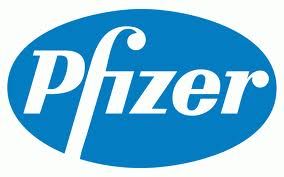The treatment of patients with chemotherapy-resistant leukemia remains a challenge. A role of the microenvironment for drug resistance of leukemia cells has been proposed.1 We have identified the adhesion molecule integrin α4 as a central mediator of drug resistance of pre-B-cell acute lymphoblastic leukemia (ALL).2 We thus demonstrated that chemotherapy-resistant pre-B-ALL cells can be eradicated in a xenograft model by concurrent blockade of α4 using natalizumab, a humanized anti-α4 antibody in clinical use against multiple sclerosis,3 and Crohn's Disease.2 Here, we extended our studies to an alternative α4 inhibitor, the non-peptidic small molecule TBC3486. Previous in vitro assays and molecular modeling studies indicated that TBC3486 behaves as a ligand mimetic, competing with VCAM-1 for the MIDAS site of integrin α4.4 As such, the compound has shown efficacy in integrin α4-dependent models of inflammatory and autoimmune disease4 and has shown efficacy in mice with autoimmune encephalomyelitis, a model for multiple sclerosis.5 As opposed to natalizumab, which will inhibit both members of the α4 integrin family, α4β1 and α4β7, TBC3486 is 200-fold more potent in inhibiting α4β1 than α4β7. In addition, it is completely inactive against all other integrins tested, including members of the β2, β3 as well as other members of the β1 family of integrins.4 The potential usefulness of this novel inhibitor for pre-B-ALL treatment was tested in our established in vitro and in vivo assays.2, 4 We evaluated the effect of TBC3486 on de-adhesion of patient-derived ALL cells (LAX7R) using established adhesion assays. As a control for our studies, a close structural analog was used that lacks activity toward α4β1 integrin (THI0012). After activating LAX7R cells with 1 mM Mn2+, leukemia cells were co-cultured with the murine stromal cell line OP9.6, 7 Subsequently, LAX7R cells were treated with different doses of TBC3486 (5, 10 and 25 μM) and its control, THI0012 (5, 10 and 25 μM), for 4 days. TBC3486 dose-dependently inhibited adhesion of ALL cells (Figure 1a), albeit the adhesion was not completely blocked. The dose of 25 μM was selected for subsequent studies. The concentrations of compound required for inhibition in these assays are higher than previously reported.4 This is due to the fact that TB3486 is highly protein bound in the presence of 20% serum (used in these assays), which significantly reduces the amount of free compound available to bind to the integrin receptor. Next, we determined whether TBC3486 decreases binding of three xenograft cells derived from primary pre-B-ALL cases (LAX7R, ICN3 and SFO3) to the counter-receptor of α4 integrin, human VCAM-1. Adhesion assays were performed as previously described4, 8, 9 by culturing ALL samples treated with TBC3486 (25 μM) or THI0012 (25 μM) on hVCAM-1-coated plates for 2 days. Compared with the control group, TBC3486-treated ALL cells showed significantly less adhesion to hVCAM-1 (Figures 1c, e and g); however, the adhesion was not completely blocked. CD49d (MFI) is expressed with higher intensity in LAX7R compared with the other two samples (ICN3 and SFO3) (data not shown), which may explain why TBC3486 blocked a larger percentage of LAX7R adhesion to VCAM-1. In addition to blocking cell adhesion, TBC3486 treatment also specifically targeted the expression of integrin α4, but not integrin α5 and α6 (Figure 1b). The treatment with TBC3486 did not affect cell viability in all three cases (Figures 1d, f and h) compared with the THI0012 control. Taken together, TBC3486 leads to the partial de-adhesion of pre-B-ALL cells from its counter-receptor VCAM-1 under the conditions described.






